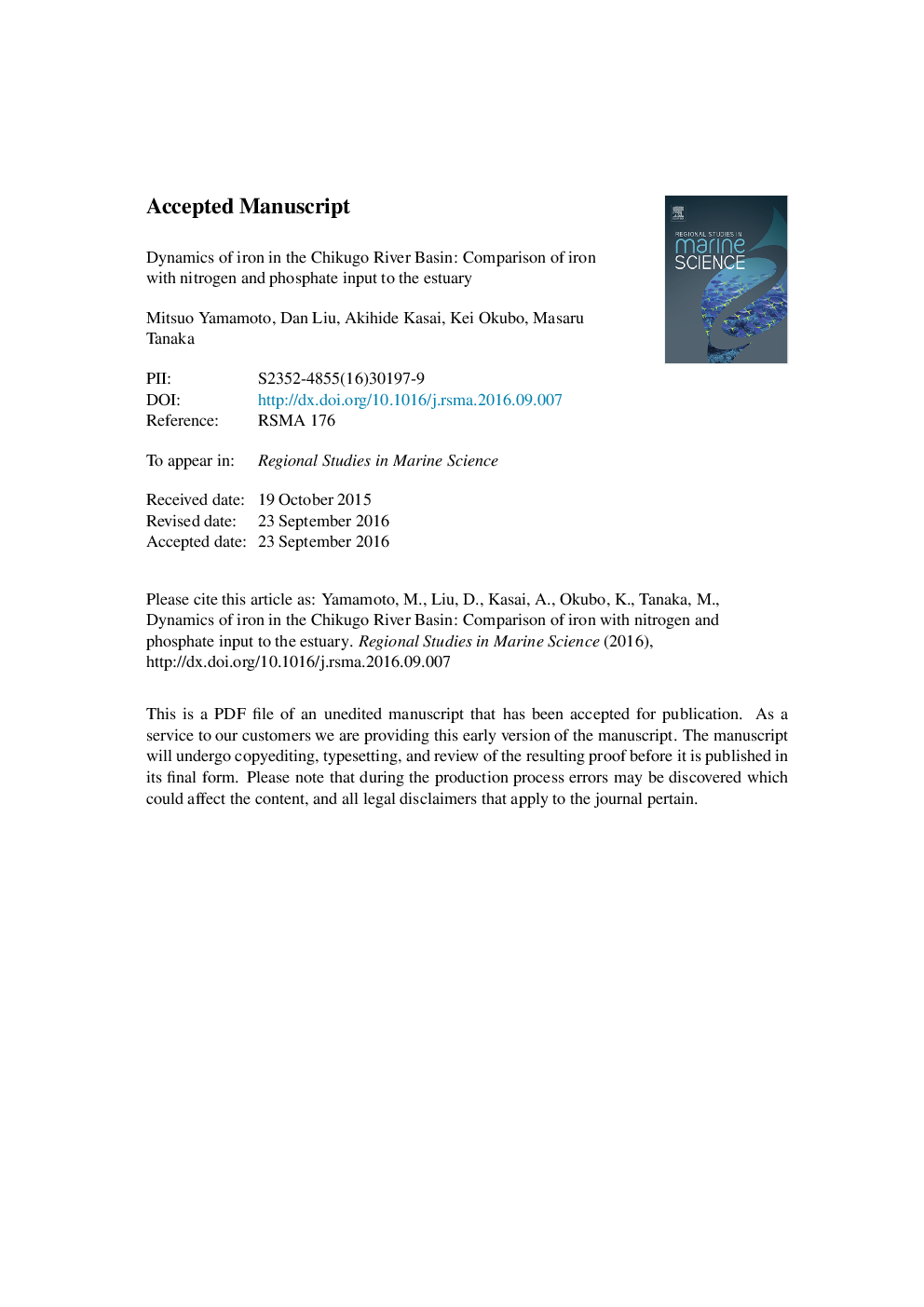| Article ID | Journal | Published Year | Pages | File Type |
|---|---|---|---|---|
| 5758128 | Regional Studies in Marine Science | 2016 | 32 Pages |
Abstract
Iron (Fe) dynamics in the Chikugo River were investigated in order to understand the relationship between the characteristics of Fe concentrations in the basin and the river estuarine ecosystem and that of the inner area of the Ariake Sea. Analysis of Fe concentration from monthly samples at 29 sites in the Chikugo River from July 2011 to May 2012 was conducted together with analyses of nitrogen (N) and phosphate (P) concentrations. Fe concentration changed slightly from the upstream to the middle basin, whereas in the estuary it increased sharply at 15 km from the river mouth and decreased again near the river mouth. This trend is different from the trends for N and P concentrations, and the Fe distribution was distinctive throughout the year. Further investigation was conducted focusing on the Fe dynamics in the estuary and the inner Ariake Sea. It was found that the trend of Fe concentration corresponds to the trend of turbidity in the estuary. The reasons of the characteristic Fe dynamics are suggested that supplied Fe is accumulated by the scavenging effect of particulate organic matter in the estuarine turbidity maximum to form floccules. As these particle materials are important for forming the ecosystem in the inner Ariake Sea, it is suggested that Fe dynamics have an influence in forming the ecosystem in the Chikugo River and the Ariake Sea.
Related Topics
Physical Sciences and Engineering
Earth and Planetary Sciences
Oceanography
Authors
Mitsuo Yamamoto, Dan Liu, Akihide Kasai, Kei Okubo, Masaru Tanaka,
